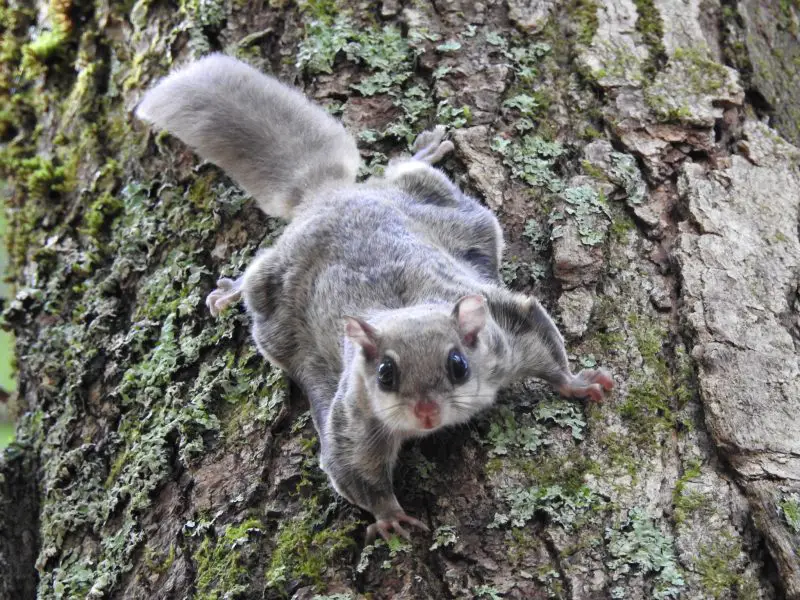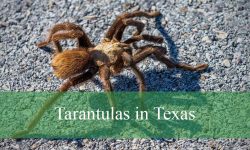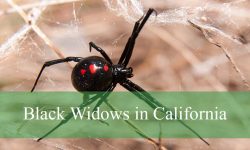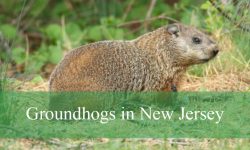Flying squirrels in Wisconsin are some of the most quietly remarkable mammals in the state’s northern forests. Unlike their daytime relatives, these small nocturnal gliders carry an air of mystery, navigating moonlit canopies with astonishing agility. Although rarely seen by the average hiker or homeowner, their presence is surprisingly widespread—from the Northwoods of Vilas and Oneida counties down to mixed hardwood forests in central Wisconsin. Their biology, sensory capabilities, seasonal behaviors, and gliding mechanics reveal adaptations that few people ever witness firsthand.
Two species inhabit Wisconsin: the northern flying squirrel and the southern flying squirrel. While both can glide, forage, and nest in cavities, they differ in habitat preferences, dietary tendencies, and winter activity patterns. These squirrels are not “flying” in the literal sense; instead, they glide on a flexible membrane stretched between their limbs. But what seems like a simple adaptation masks a level of precision and survival intelligence that rivals many better-known mammals.
Below are ten mind-blowing facts about flying squirrels in Wisconsin—details that uncover the hidden world of one of the state’s most fascinating nocturnal creatures.
1. Flying Squirrels Don’t Actually Fly—but Their Gliding Is Remarkably Advanced

Their Patagium Works Like an Organic Parachute
Flying squirrels use a thin membrane called the patagium, extending from wrist to ankle, to transform their bodies into aerodynamic gliders. When they leap from trees, this membrane spreads out, catching air and allowing high-control gliding.
The patagium changes shape during flight as they shift limb positions.
This dynamic control lets them adjust direction mid-air.
They Can Glide Over 150 Feet in a Single Leap
Wisconsin’s northern flying squirrels are especially skilled gliders. In areas with tall conifers, a single jump can carry them 80–150 feet, sometimes even farther depending on elevation.
Their glide ratio allows them to drop minimal height over long distances.
This efficiency helps them travel between trees without descending to the ground.
Their Tails Serve as Rudders and Air Brakes
The tail flattens during glides, steering their descent and helping them brake before landing. A final upward flick slows their fall dramatically.
This maneuvering protects them from predators waiting on the forest floor.
Their aerial precision rivals that of many birds.
2. Wisconsin Has Two Species With Overlapping Ranges
Northern and Southern Flying Squirrels Share Forest Habitats
Both species live in Wisconsin, with northern flying squirrels more common in the boreal and mixed conifer zones, while southern flying squirrels dominate deciduous forests.
Where ranges overlap, hybridization can occur.
These hybrid zones offer unique research opportunities.
Northerns Prefer Cool, Moist Woodlands
Northern flying squirrels thrive in spruce, fir, hemlock, and white cedar forests. They rely heavily on fungi and lichens associated with conifer ecosystems.
Their presence is tied closely to old, mature forests.
These habitats are most abundant in northern Wisconsin.
Southerns Favor Oak-Hickory and Maple Forests
Southern flying squirrels forage more heavily on nuts and seeds. They occupy woodlands with mast-producing trees, especially in central and southern Wisconsin.
Their adaptability allows them to live near human settlement.
Species distribution reflects forest composition across the state.
3. They Navigate Night Forests With Near-Perfect Low-Light Vision
Their Eyes Are Specialized for Nocturnal Sensitivity
Large, dark eyes allow flying squirrels to absorb minimal light under dense forest canopy. Light-collecting retinal adaptations enhance contrast detection at night.
This sensitivity helps them see branches and predators clearly.
Their nocturnal vision is key to their survival strategy.
They Use Whiskers and Touch to Guide Movement
Long vibrissae (whiskers) extend from their noses and cheeks. These sensory hairs pick up air currents, branch locations, and obstacles.
Whisker feedback supports precise gliding and climbing.
Their tactile sense supplements their visual limitations.
UV Reflection Helps Them Communicate
A surprising discovery revealed that flying squirrels fluoresce bright pink under ultraviolet light. Though humans don’t see this, UV-sensitive animals may detect these signals.
The function remains debated—possibly communication or predator confusion.
This hidden trait sets them apart from most mammals.
4. Flying Squirrels in Wisconsin Are Surprisingly Social for Nocturnal Mammals
They Nest Together to Conserve Heat
During winter, flying squirrels share nest cavities, sometimes with groups of up to ten individuals. Communal nesting reduces heat loss and conserves energy during frigid nights.
This cooperative behavior is vital in northern climates.
Group warmth greatly improves winter survival.
They Maintain Loose Social Networks
Although not forming strong family groups like primates, flying squirrels maintain overlapping territories and may share foraging routes.
Social tolerance increases in food-rich habitats.
Their networks create complex forest micro-communities.
They Communicate Using High-Frequency Sounds
Most of their vocalizations occur above the range of human hearing. Ultrasonic chirps and squeaks coordinate movement, warn others, or communicate nesting activity.
These calls maintain group cohesion despite darkness.
Their soundscape remains largely hidden from human observers.
5. They Play a Critical Ecological Role in Wisconsin’s Forest Health
They Are the Primary Dispersers of Truffle-Like Fungi
Northern flying squirrels specialize in eating subterranean fungi, particularly truffles associated with mycorrhizal networks. They disperse these spores across the forest when they defecate.
This dispersal helps tree roots absorb nutrients and water.
Their ecological role rivals that of many birds.
They Aid Regeneration of Mature Forests
By carrying fungi spores across wide distances during nightly glides, flying squirrels help sustain old-growth tree communities. Without them, some fungi would struggle to reproduce.
Their presence strengthens soil and root networks.
They are essential contributors to forest resilience.
They Control Insect Populations and Spread Seeds
In addition to fungi, flying squirrels eat nuts, buds, insects, and fruit, influencing both pest cycles and seed distribution.
Their varied diet connects multiple food webs.
Their ecological footprint is far larger than their size suggests.
6. Flying Squirrels Use Tree Cavities, Woodpecker Holes, and Nest Boxes
Natural Cavities Provide Safe Shelter
Hollow trees protect flying squirrels from predators and temperature extremes. They prefer cavities lined with soft materials such as shredded bark, moss, or lichens.
These cavities form core nesting sites year-round.
Their reliance on tree hollows ties them to older forests.
Abandoned Woodpecker Holes Are Critical
Wisconsin’s pileated and red-bellied woodpeckers create deep cavities ideal for small mammals. Flying squirrels frequently take over these excavations.
This interspecies dependency helps maintain forest diversity.
Without woodpeckers, flying squirrel nesting opportunities decline.
Nest Boxes Are Readily Used in Suburban Areas
In developed regions, nest boxes provide alternative shelter. Homeowners often discover flying squirrels unexpectedly living inside birdhouses.
Their adaptability enables coexistence with humans.
Nest boxes help monitor local populations.
7. Winter Activity Patterns Differ Between Species
Northern Flying Squirrels Stay Active All Winter
Unlike many small mammals, northern flying squirrels remain awake during winter. Their thick fur and communal nesting help them tolerate cold temperatures.
They forage on fungi hidden beneath snow layers.
Their winter ecology is surprisingly dynamic.
Southern Flying Squirrels Reduce Activity in Deep Cold
Though not true hibernators, southern flying squirrels decrease above-ground activity during severe cold spells. They rely more on stored food and group nesting.
Their cold sensitivity limits northern range expansion.
Winter conditions shape statewide distribution.
Food Scarcity Drives Winter Foraging Strategy
Both species adjust diets to available resources—fungi, stored nuts, tree buds, and lichens.
Their survival during harsh Wisconsin winters showcases remarkable flexibility.
Resource availability guides their nocturnal routes.
8. These Squirrels Use Extreme Agility to Evade Wisconsin Predators
They Twist and Turn During Glides
Predators like owls track movement by sound and silhouette. Flying squirrels counter this by altering glide direction mid-air, often making sudden S-shaped patterns.
These maneuvers reduce interception risk.
Their agility makes them challenging prey.
They Rely on Height and Darkness
Their glides originate from high perches where predators cannot easily follow. Nighttime activity also protects them from daytime hawks.
Owls remain their primary natural threat.
Darkness provides a significant survival advantage.
They Freeze Motion to Avoid Detection
When cornered, flying squirrels sometimes freeze against tree bark, blending seamlessly with the trunk.
This stillness disrupts predators’ motion-based vision.
Their camouflage works well under low light.
9. Their Diet Is Far More Complex Than Most People Realize
They Eat Fungi, Seeds, Nuts, Fruit, and Insects
Flying squirrels have one of the most varied diets among small mammals. This flexibility enables them to survive shifting seasons, storms, and resource scarcity.
Their diet changes monthly, even weekly.
Such adaptability supports year-round survival.
They Have a Strong Preference for Truffles and Lichens
Northern flying squirrels depend heavily on underground fungi, which contribute to the health of conifer forests.
This fungal reliance makes them excellent indicators of forest health.
Their feeding patterns influence tree growth indirectly.
They Occasionally Eat Bird Eggs and Nestlings
Although uncommon, they may consume small animal protein during breeding season when nutritional needs increase.
This opportunism gives them access to high-calorie meals.
Their omnivory is more complex than most woodland species.
10. Flying Squirrels Are Expanding in Some Areas and Declining in Others
Habitat Loss Affects Northern Flying Squirrels
Old-growth conifers and mature hardwoods are essential for northern flying squirrels. Logging and fragmentation shrink available range.
Populations decline where forests are heavily altered.
Their dependence on fungi further ties them to intact ecosystems.
Southern Flying Squirrels Are Expanding Northward
Warmer winter temperatures and increased oak-hickory habitats allow southern flying squirrels to move deeper into northern counties.
This northward expansion may increase hybrid zones.
Climate and forest management shape future distributions.
Long-Term Conservation Depends on Forest Restoration
Maintaining tree cavities, preserving old forests, and supporting woodpecker populations help sustain flying squirrel numbers.
Their survival is linked to holistic forest health.
Conservation efforts benefit entire ecosystems, not just squirrels.
FAQs About Flying Squirrels in Wisconsin
Are flying squirrels common in Wisconsin?
Yes, they are widespread but seldom seen due to nocturnal behavior.
Do flying squirrels really fly?
No. They glide using a skin membrane called the patagium.
Are flying squirrels dangerous?
Not to humans. They avoid confrontation.
Where can I observe flying squirrels?
Forest edges, parks with mature trees, and nest boxes may host them.
Do flying squirrels hibernate?
No. Northerns stay active; southerns slow activity in severe cold.
What do flying squirrels eat most?
Fungi, nuts, seeds, insects, fruit, and occasionally small prey.
Can flying squirrels live in suburban areas?
Yes. They commonly use nest boxes and older shade trees.
Why are they so hard to see?
They are nocturnal and glide silently through treetops.
Conclusion
Flying squirrels in Wisconsin are far more extraordinary than their elusive presence suggests. Their night-gliding abilities, communal winter behaviors, sensory adaptations, forest-shaping diet, and surprising intelligence reveal a mammal intricately adapted to the woodlands of the Upper Midwest. Whether navigating moonlit canopies, dispersing essential fungi, or surviving subzero winters through shared nests, flying squirrels remain one of Wisconsin’s most quietly influential species.
Understanding these ten incredible facts highlights not only their hidden brilliance but also the importance of preserving the forests that sustain them. Protecting flying squirrels means protecting the ecological foundation of Wisconsin’s natural heritage—ensuring these remarkable gliders continue soaring across the night sky for generations to come.






